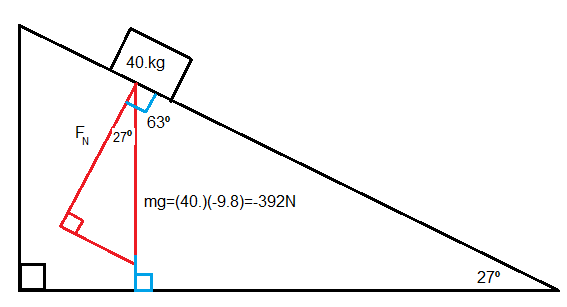Physics: calculating the normal force on a slope
Tutoring physics, you cover this every year. The tutor offers a quick guide.
The normal force (FN) refers to the gravitational force perpendicular to the surface an object sits on. If the object sits on a level surface, the normal force is merely mass times gravity, or
FN=mg
where m is the mass in kg and g=-9.8N/kg on Earth’s surface.
Example: Calculate the normal force acting on a 1.2kg textbook lying flat on a table.
Solution: FN=mg=(1.2)(-9.8)=-11.76N or -12N in significant digits. The negative sign just means the force of gravity is downwards.
If the object is lying on a sloped surface, the normal force is no longer straight down; rather, it acts perpendicular to the angle of the slope. Trigonometry is required, in such a case, to calculate the normal force.
Example: Calculate the normal force acting on a 40.kg object lying on a 27º incline.
Solution: We are best off to draw a diagram:

Notice that, in the red triangle, FN is adjacent to the 27º angle. The hypotenuse is mg=-392. Therefore,
FN=mgcos27o=-392cos27o=-349.3N=-350N in sig digs
It only makes sense that, as the incline gets steeper, the normal force diminishes. The gravitational force shifts toward pulling the object down the incline instead.
Jack of Oracle Tutoring by Jack and Diane, Campbell River, BC.
Leave a Reply
You must be logged in to post a comment.